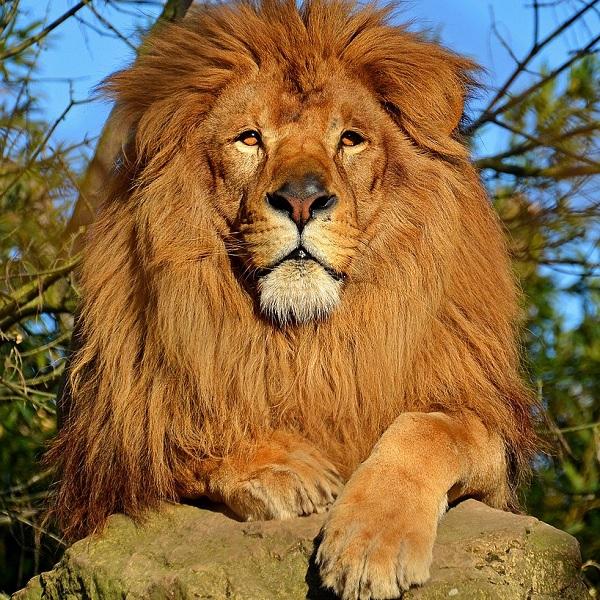
Lions, commonly known as the “Kings of the Jungle,” are at the top of their food chains. They may look cute, harmless, and just like your average house cat, but these hundred-pound killing machines are not to be trifled with or you could end up in the hospital or worse, in a body bag. Lions hunt in groups called prides. This effective strategy has allowed these animals to kill prey twice their size. These include wildebeest, giraffes, and elephants. While this majestic creature needs no introduction, there are still many facts that the average person doesn’t know. Below are ten facts about lions that you probably didn’t know.
Fact 1:
Lionesses live within the confines of an area that their previous generations have controlled for their entire lives. Meanwhile, lions roam long distances in search of other prides with which to mingle and breed. This fact is known to many, especially budding zoologists and animal lovers. However, what they still do not know is the consequences. Male lions can fend for themselves. In fact, they spend most of their lives alone, so they need to learn how to be an effective hunter.
Fact 2:
Few studies confirm only the first fact mentioned above. However, it is an interesting discovery that may give rise to new tendencies. Firstly, studies have linked male hunting patterns to vegetation structure. In such cases, it was an indirect form of care for the cubs by the males. Less vegetation means less protection for the pride’s cubs. This is why African lions are forced to seek out areas with denser vegetation. With denser vegetation, the males have much more hunting grounds, which allows the cubs to eat more and become stronger.
Fact 3:
Another tragic but infamous fact about African lions is that a change in pride leader results in the killing of a lioness's existing offspring. What remains hidden is that a male lion taking over a pride of females can force other members to flee. In fact, that's how many lionesses flee the territory where she was conceived. While this isn't necessarily a death sentence, it does dramatically reduce her chances of survival, as non-pride lions aren't as strong or efficient at hunting food.

Fact 4:
Male lions often mate with other male lions outside of the pride. While people think that there are often more females than males in a pride, the reality is surprisingly the opposite. Essentially, there will be a group of females mated with a group of two to four males. The larger the male population in a pride, the better their reproductive health.
Fact 5:
Most people refer to a group of lions as a pride. However, what they don’t know is that scientists and field researchers actually differentiate groups of lions based on the gender of the pride. In reality, a pride is a group of female lions that are related and live together. On the other hand, a group of male lions is known as a coalition. Knowing this key piece of information can help you catch up and connect with lions.
Fact 6:
With such dominance and ferocity in their territories, you would think that no one would dare to come face to face with a pride of lions. Using their sharp, powerful claws and a nasty bite that strangles their prey, lions can overcome even the largest elephants and even the most stubborn buffalo. Ironically, their worst dog-sized enemies are porcupines. Armed with their quills, the porcupine drives away lions, who prefer not to have their protruding stingers stuck to their faces.
Fact 7:
A lion's tail has a meaning beyond its appearance. It is usually waggled to signal other lions and convey messages, such as warnings of impending danger. So the next time you see a lion in a zoo or in the wild, you will know that those tail wags are not without meaning. Speaking of a lion's tail, there is an African proverb that says, "Never hold a lion by the tail, dead or alive." A lion is a very dangerous animal and should not be played with, worked with, or messed around with.
Fact 8:
The lion's paw, reinforced with sharp, retractable claws, is one of its most important hunting arsenals. Retractable claws allow these giant cats to cling to their prey and also prevent unwanted injuries during play.

Fact 9:
The lion's back row of teeth, also known as carnassials, cuts like scissors, which is extremely useful when eating thick-skinned prey like buffalo or elephant. While their set of teeth helps cut chunks of flesh, lions don't actually chew their prey. Instead, they swallow it with one side of their mouth.
Fact 10:
Lions and lionesses greet each other in a rather rude manner. To the naked eye, it may look like the animals are fighting, but on the contrary, it is a way of saying "hello." This gesture signifies a bond that is unique to the pride, as lions leave scent marks on their pride members. Even domesticated cats exhibit this trait, rubbing against their human companions, which actually signifies ownership.














Оставить Комментарий